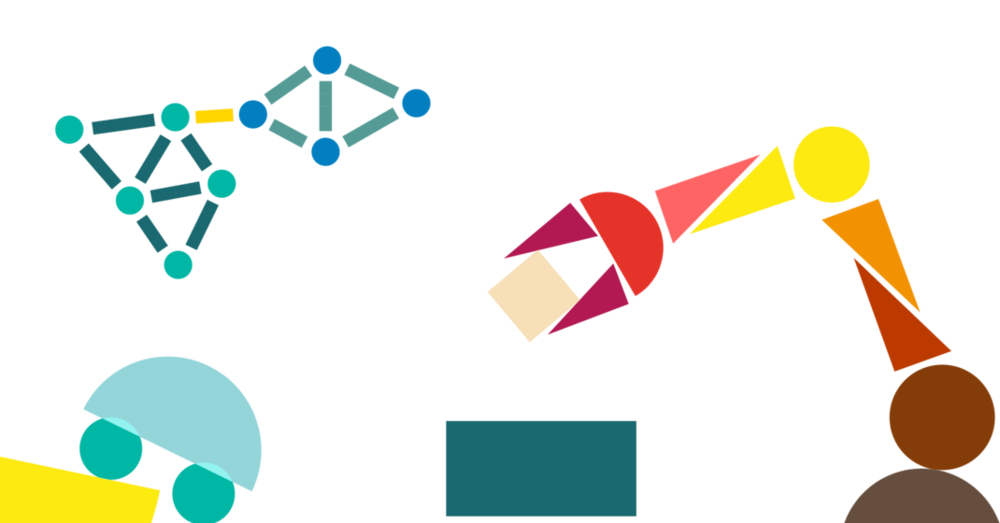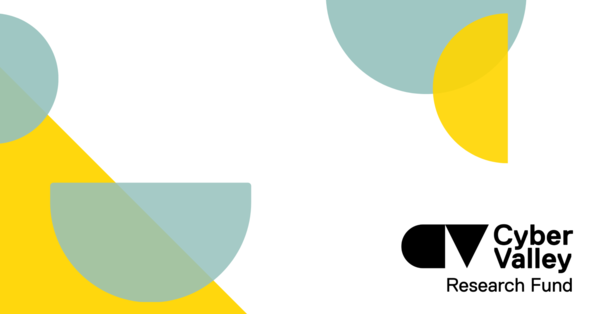Cyber Valley Research Fund Event
Bringing AI fundamental research to new heights

On November 14th 2023, the symposium for the Cyber Valley Research Fund took place at the Max Planck Institute for Intelligent Systems in Tübingen.
Experts from industry and academia came together to discuss scientific advancement and to brainstorm future research paths. “The Cyber Valley Ecosystem continues to grow as a hotspot for innovation and research in AI and robotics”, Cyber Valley Scientific Coordinator Janell Lia-Breitmayer emphasized in her opening speech. This event lies at the heart of Cyber Valley, which originated from a collaboration between industry and academia to bring scientific excellence for the benefit of society.
Cyber Valley Research Fund Initiatives
The first cornerstone of the symposium was the presentation of five independent research initiatives that have thrived under the support of the Cyber Valley Research Fund. Prof. Dr. Jörg-Dieter Stückler, who heads the Embodied Vision Research Group, showed how the use of an adaptive dynamics model can improve the trajectory estimation and prediction of a robot. By optimizing its parameters in a self-supervised manner, the robot can adapt to variations in system dynamics and plan a more efficient path through unknown terrain.
In a second research project supervised by Stückler under the Cyber Valley iniative, the group combined extended Kalman filtering with a differentiable physics simulator to estimate trajectories of 3D objects. In addition to reconstructing an object’s shape and pose, the model is able to infer physical properties, such as velocity and friction, from RGB-D images. This information can be used to simulate physically plausible trajectories of sliding and colliding objects.
Subsequently, two projects of the Physics for Inference and Optimization Research Group led by Caterina De Bacco were presented. PhD student Martina Contisciani discussed advancements in network reconstruction from data. By relaxing assumptions about the conditional independence of edges, she enhances the detection of communities and clusters. In addition, her probabilistic model is able to infer the reliability of nodes, which is particularly valuable in reconstructing networks from social sciences data, where conflicting reports from multiple individuals are common.
Postdoctoral researcher Dr. Hadiseh Safdari continued the discourse by looking at anomaly detection within networks. To identify parts of the network that deviate from the norm, she and her colleagues use a probabilistic generative model that compares the observed network with synthetic data, generated based on assumptions about community membership and reciprocity. Safdari highlighted applications such as uncovering fake users on social media platforms and detecting fraudulent activities in financial transactions.
Prof. Dr. Georg Martius, leader of the Autonomous Learning Research Group, explored the fusion of combinatorial algorithms and machine learning. He presented a method that implements a backward pass for combinatorial solvers with linear objective functions, allowing them to be used as building blocks in deep learning pipelines. This novel approach exploits both the reliability and efficiency of discrete optimization and the flexibility of deep learning, resulting in architectures that can solve tasks beyond the capabilities of conventional neural networks.
After the lunch break, Rebecca Beiter's presentation on public engagement for the industry resonated as a powerful call for a modern communication paradigm. Engaging with the public entails more than just information dissemination, she emphasized — it requires active and ongoing interaction with all relevant knowledge actors, including politicians, journalists, NGOs, start-ups, and educational institutions. Beiter underlined the evolution of public engagement, defining it as a field, a practice, and above all, an attitude: "It will change the culture in which you work!”.
Cyber Valley Founding Partner Industry Research
In the final round of presentations, representatives from Porsche, Amazon, and Fraunhofer shared insights into industry research. Dr.-Ing Bruno Kistner, Head of Data-Driven Development at Porsche AG, highlighted Porsche's use of AI in customer-centric applications, exemplified by intelligent climate control among its smart products and services. He outlined Porsche's AI-driven optimization of production processes, ensuring quality and support to employees throughout the design and production phases.
Amazon Applied Principal Scientist, Dr. Betty Mohler-Tesch, demonstrated how Amazon aims to enhance customer experience with innovation, such as virtual avatars and AI-powered personal shoppers. Stressing the importance of inclusivity, she remarked: “Fashion is for everyone – you can’t avoid putting clothes on in the morning”. Her research group aims to improve the generation of realistic three-dimensional human avatars. Their goal is to enable customers to digitally try on clothes and order custom-fit garments, thereby reducing stress and lowering return rates.
Fraunhofer IAO researcher Ravi Kanth Kosuru spoke about Fraunhofer’s research in applied neurocognitive systems. Aiming to promote human-machine partnership, the group employs neuro-technology, such as EEG systems, to measure cognitive and emotional states of users. Their work involves refining brain-computer interfaces to enable the interpretation of brain signals, data classification, and automatic error detection.
In the final presentation, Fraunhofer IPA Researcher Tim Nickel presented model-free 3D bin packing as an innovative solution for the growing need for warehouse automation. Physically demanding yet mentally unstimulating, packaging is prone to error, making it ideal for automation. Nickel presented a robot system capable of densely packing arbitrarily shaped objects with ad hoc planning. Unlike static approaches, this method enables unexpected circumstance, such as rolling or shifting of objects, without collision.
The evening was rounded off by a lively networking session, which included discussions on open research questions and potential future collaborations.
For any questions regarding the Cyber Valley Research Fund, please contact:
Related Articles

The Cyber Valley Research Fund Symposium 2025

Cyber Valley Research Fund project optimizes focus and pr...

